August 2, 2002
August 2, 2002 saw another very intense auroral display. This was the third of 5 displays in less than 6 weeks! An alert had been posted on the internet the day before, so for once I was ready for with a new roll of film in the camera.
The display was visible very shortly after sundown, starting as a greenish arc low to the northern horizon, which brightened steadily and increased in altitude.
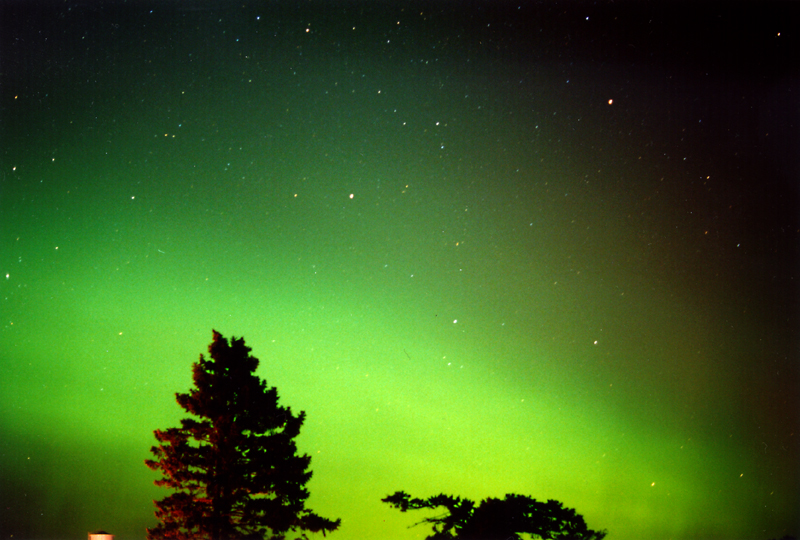
30 seconds exposure, Fuji Superia 200 film.
50mm Nikkormat lens at f/2.
Shortly after sundown, looking slightly east of north. Perseus is on the left edge, while beta andromedae is the bright star at the upper right. M 31 is just out of view at the top right. Hamal is at the bottom right.
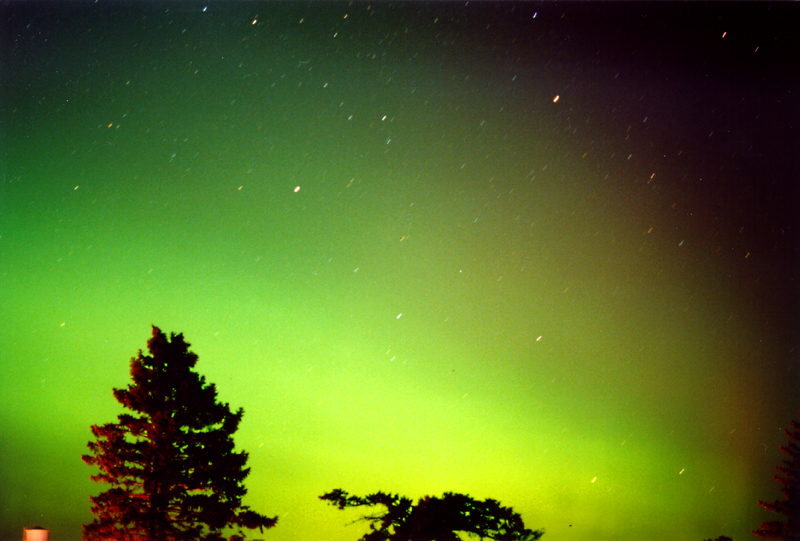
120 seconds exposure, Fuji Superia 200 film.
50mm Nikkormat lens at f/2.
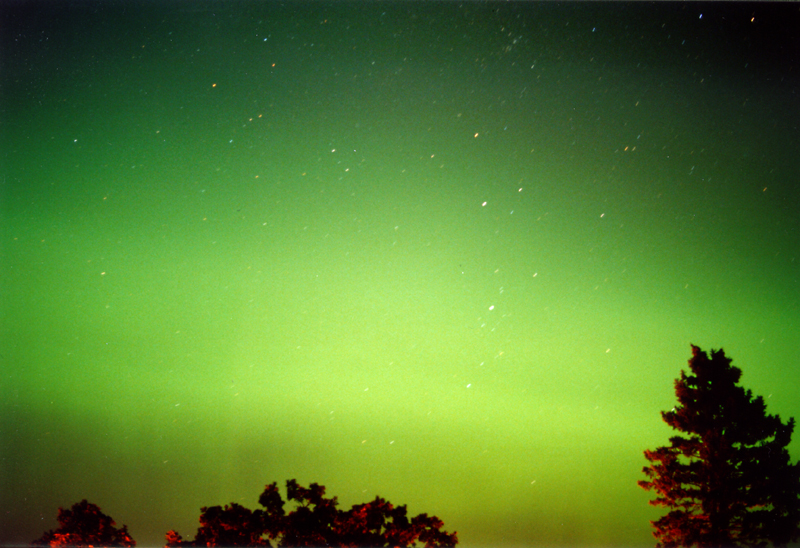
60 seconds exposure, Fuji Superia 200 film.
50mm Nikkormat lens at f/2.
Looking almost due north towards Perseus, with the double cluster is visible at the top of the image. Camelopardus is at the left.
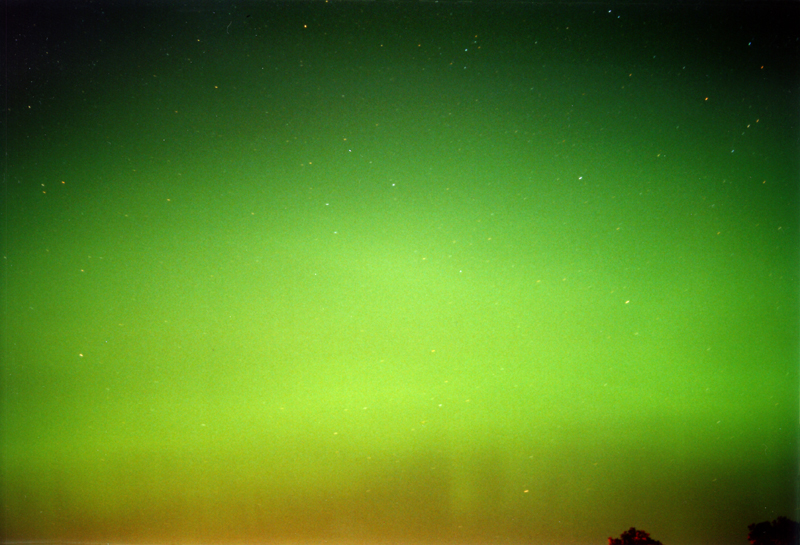
30 seconds exposure, Fuji Superia 200 film.
50mm Nikkormat lens at f/2.
Moving further to the west, centred on Camelopardus.
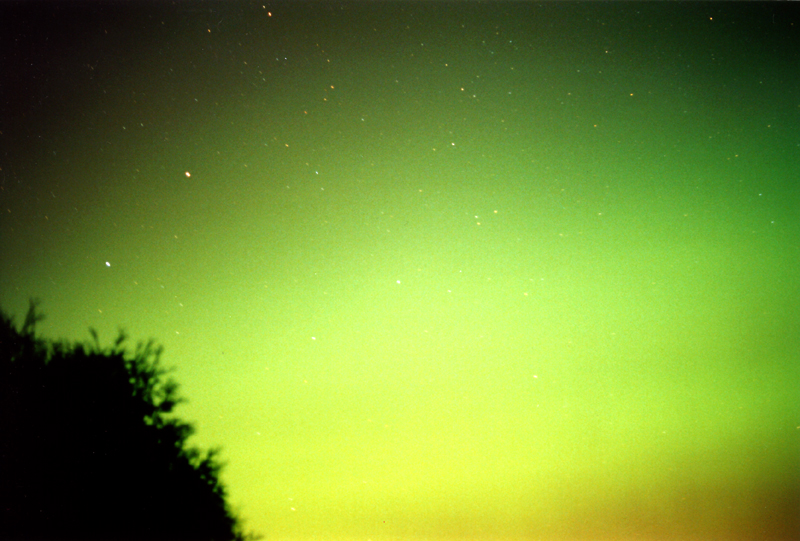
30 seconds exposure, Fuji Superia 200 film.
50mm Nikkormat lens at f/2.
Now looking north-west. Alpha and beta ursae majoris (the western stars of the big dipper) are the bright stars to the left.
After about 30 minutes, activity increased considerably. The aurora became much brighter and higher, several rays appeared as did some curtaining. Red colouration also became visible in the upper protions of the display.
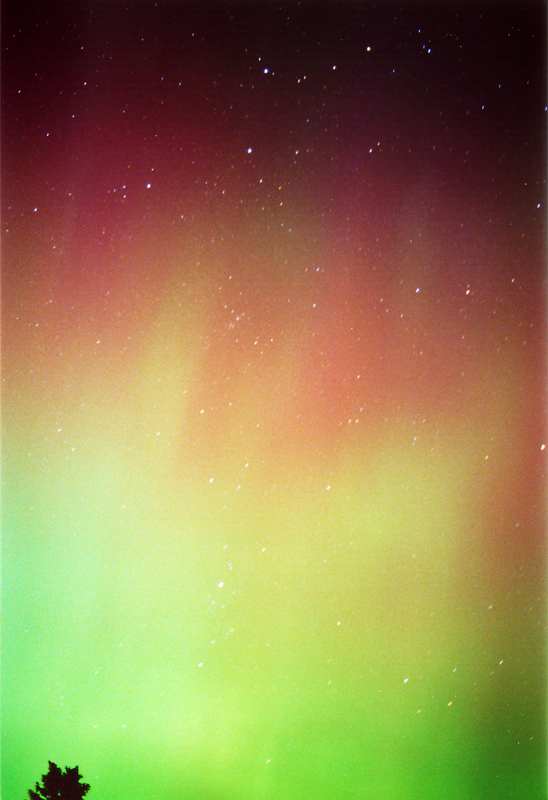
45 seconds exposure, Fuji Superia 200 film.
50mm Nikkormat lens at f/2.
Looking slightly east of due north towards Perseus. Part of Cassiopeia is visible at the top.
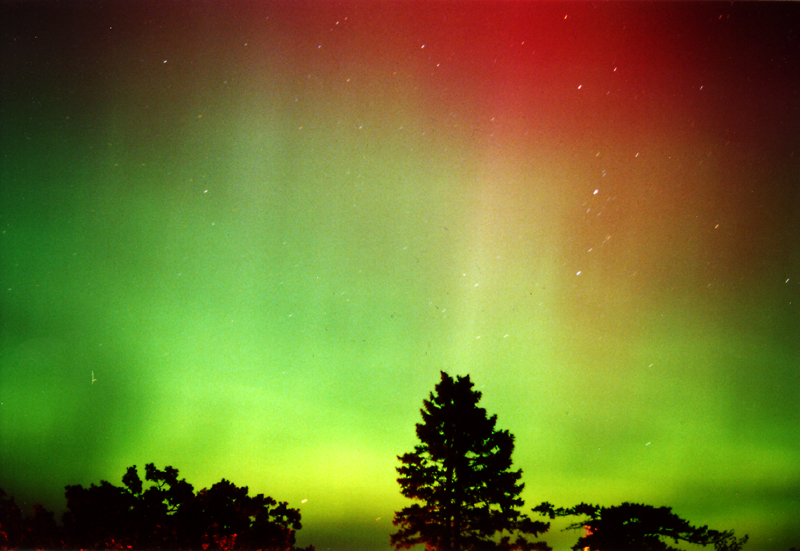
90 seconds exposure, Fuji Superia 200 film.
50mm Nikkormat lens at f/2.
Looking due north. Capella is visible low on the horizon.
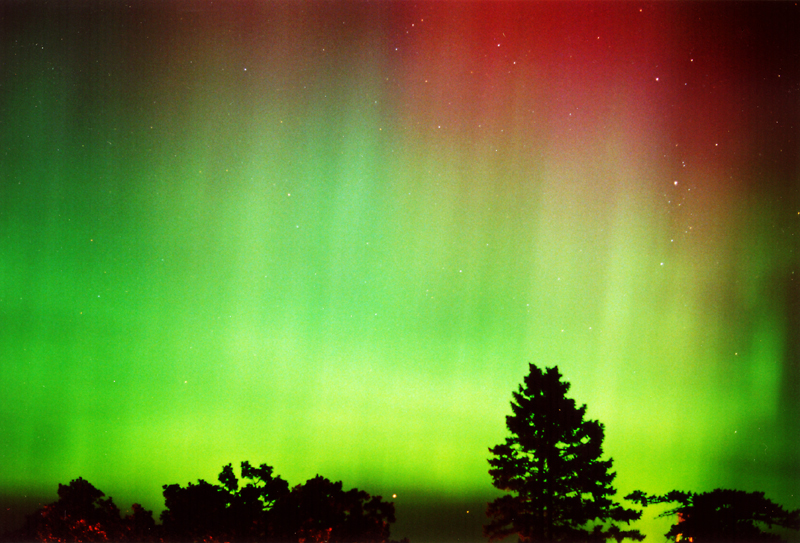
30 seconds exposure, Fuji Superia 200 film.
50mm Nikkormat lens at f/2.
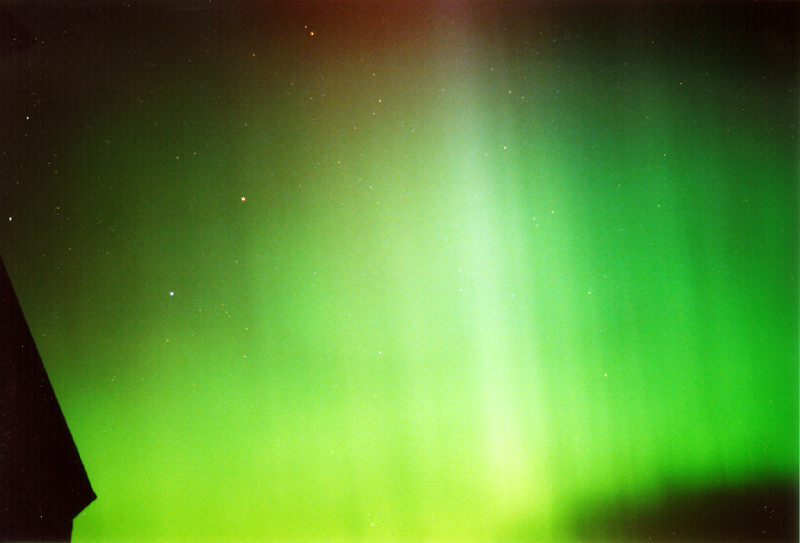
30 seconds exposure, Fuji Superia 200 film.
50mm Nikkormat lens at f/2.
Looking north-west towards the bowl of the big dipper.
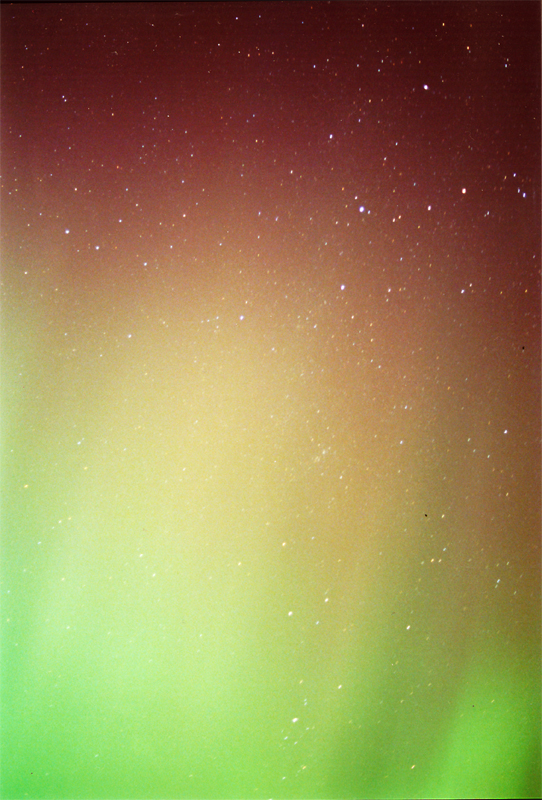
45 seconds exposure, Fuji Superia 200 film.
50mm Nikkormat lens at f/2.
This intense display lasted about 45 minutes, after which the display died down for almost an hour. After that, the display intensified once more and displayed a beautiful curtain effect.
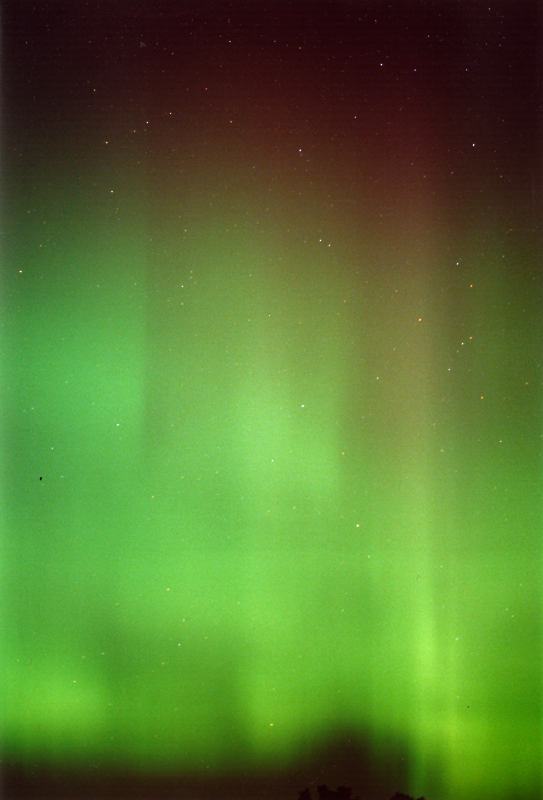
30 seconds exposure, Fuji Superia 200 film.
50mm Nikkormat lens at f/2.
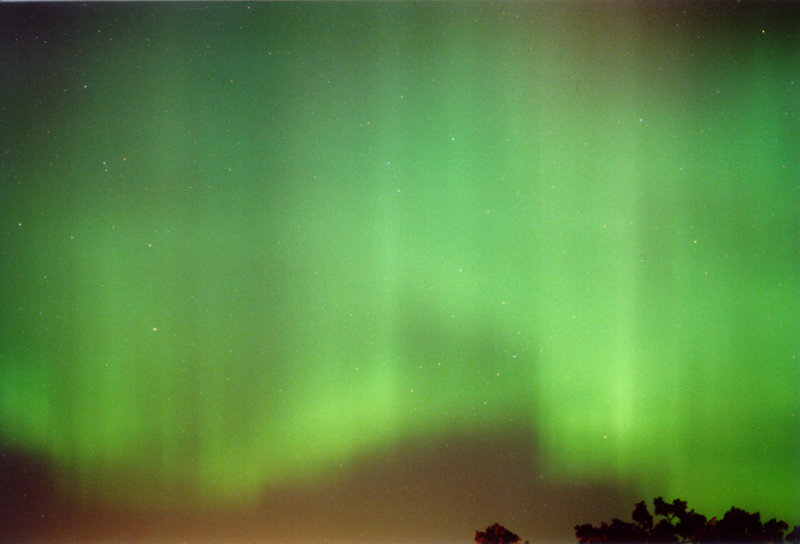
30 seconds exposure, Fuji Superia 200 film.
50mm Nikkormat lens at f/2.
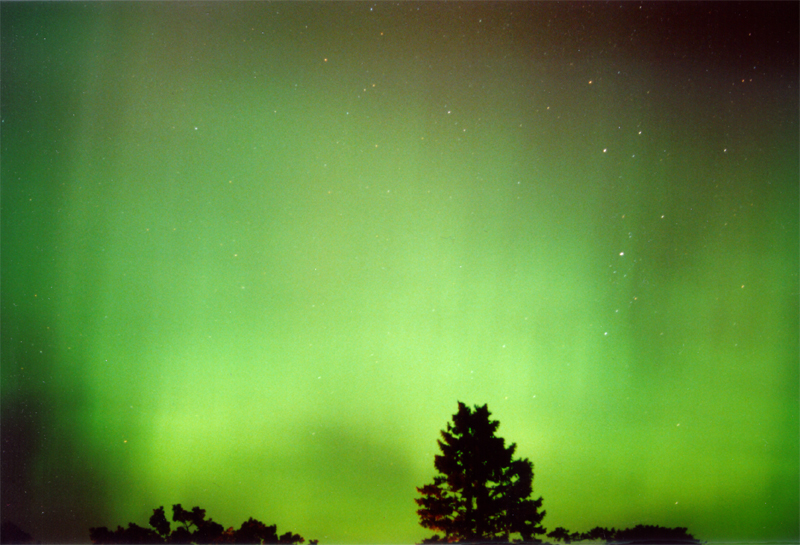
30 seconds exposure, Fuji Superia 200 film.
50mm Nikkormat lens at f/2.
Several very bright rays were visible, as was some red colouration, although this was not as strong as earlier.
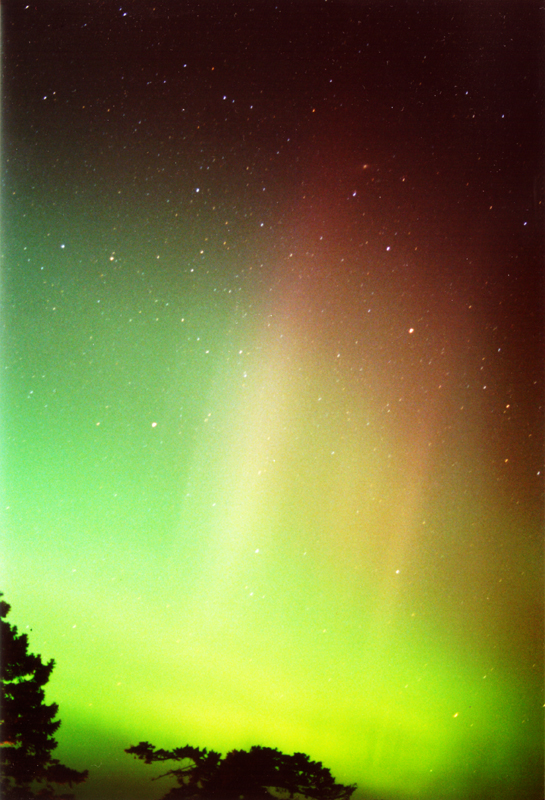
45 seconds exposure, Fuji Superia 200 film.
50mm Nikkormat lens at f/2.
Beta andromedae is the bright star to the right of centre, while M31 is visible above it.
After about 45 minutes, the aurora died down once more for about another hour, before intensifying yet again. This was the best part of the display, with the aurora being very bright. A good curtain effect was visible, as were numerous bright rays and considerable red colouration.
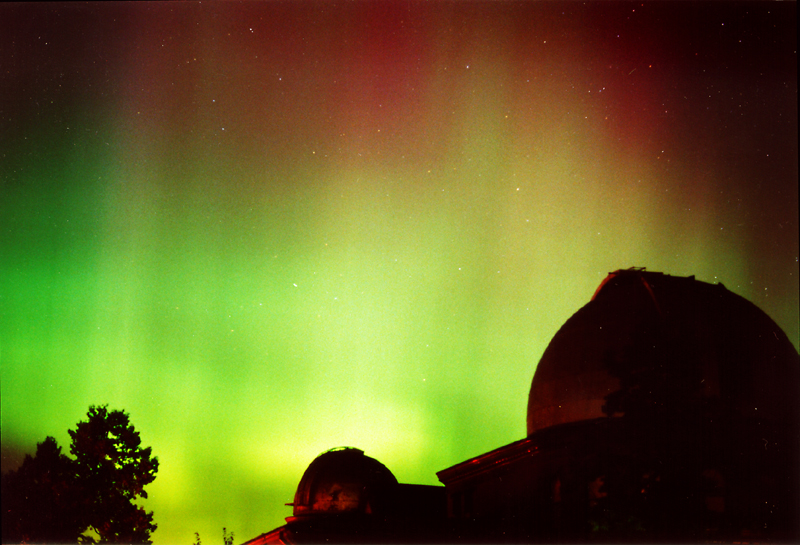
30 seconds exposure, Fuji Superia 200 film.
50mm Nikkormat lens at f/2.
The aurora shines brightly over the Goodsell observatory.
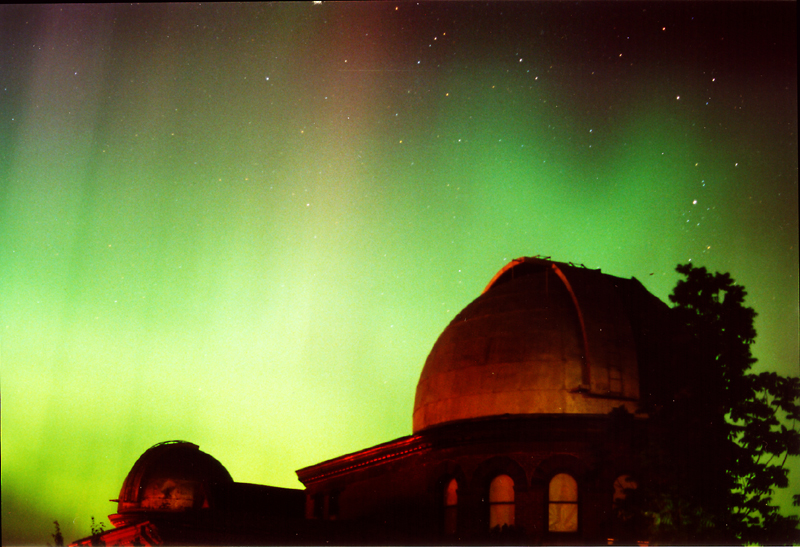
60 seconds exposure, Fuji Superia 200 film.
50mm Nikkormat lens at f/2.
Looking a little east of north. Perseus is visible on the right. The yellow light on the observatory is caused by the campus light pollution.
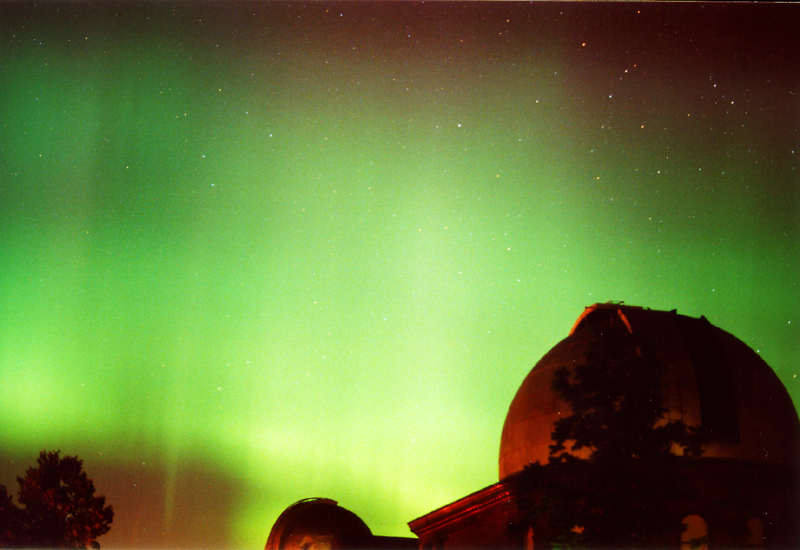
30 seconds exposure, Fuji Superia 200 film.
50mm Nikkormat lens at f/2.
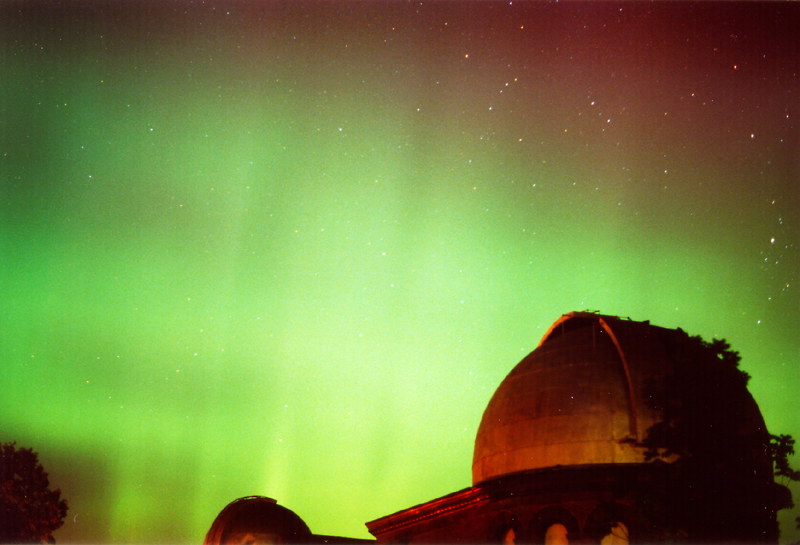
30 seconds exposure, Fuji Superia 200 film.
50mm Nikkormat lens at f/2.

















